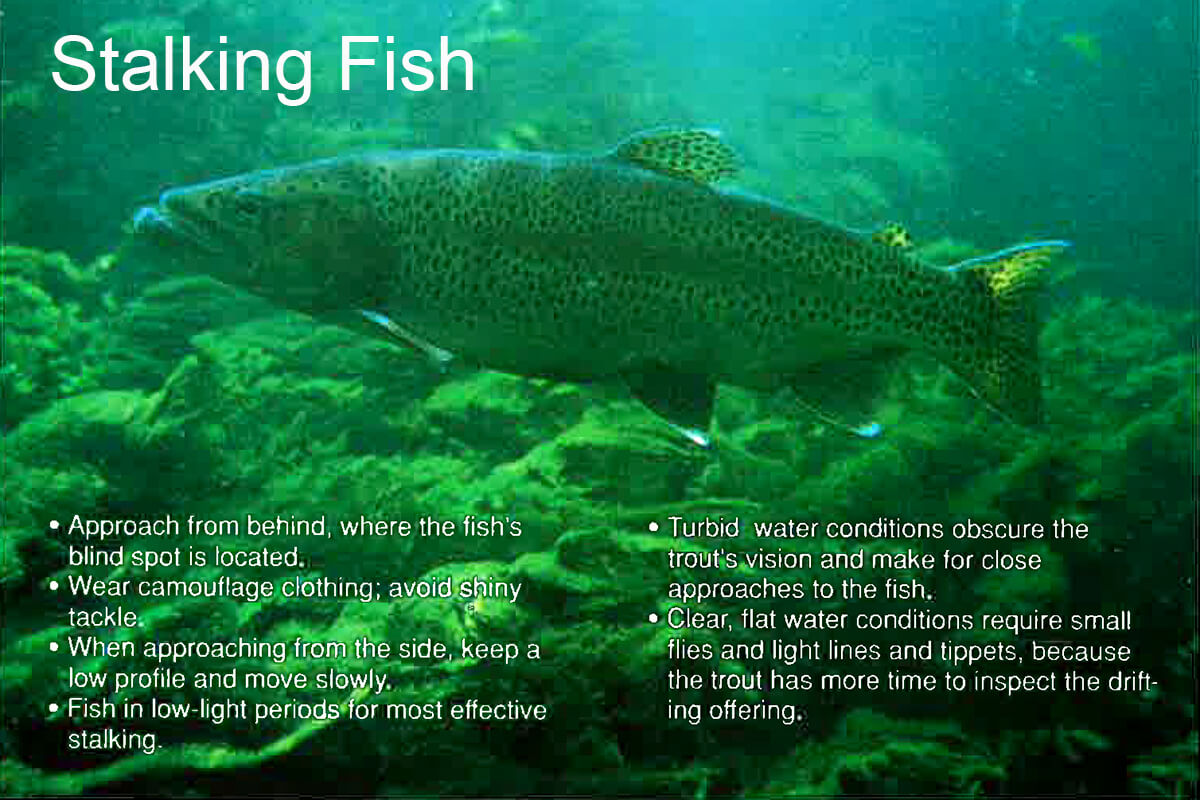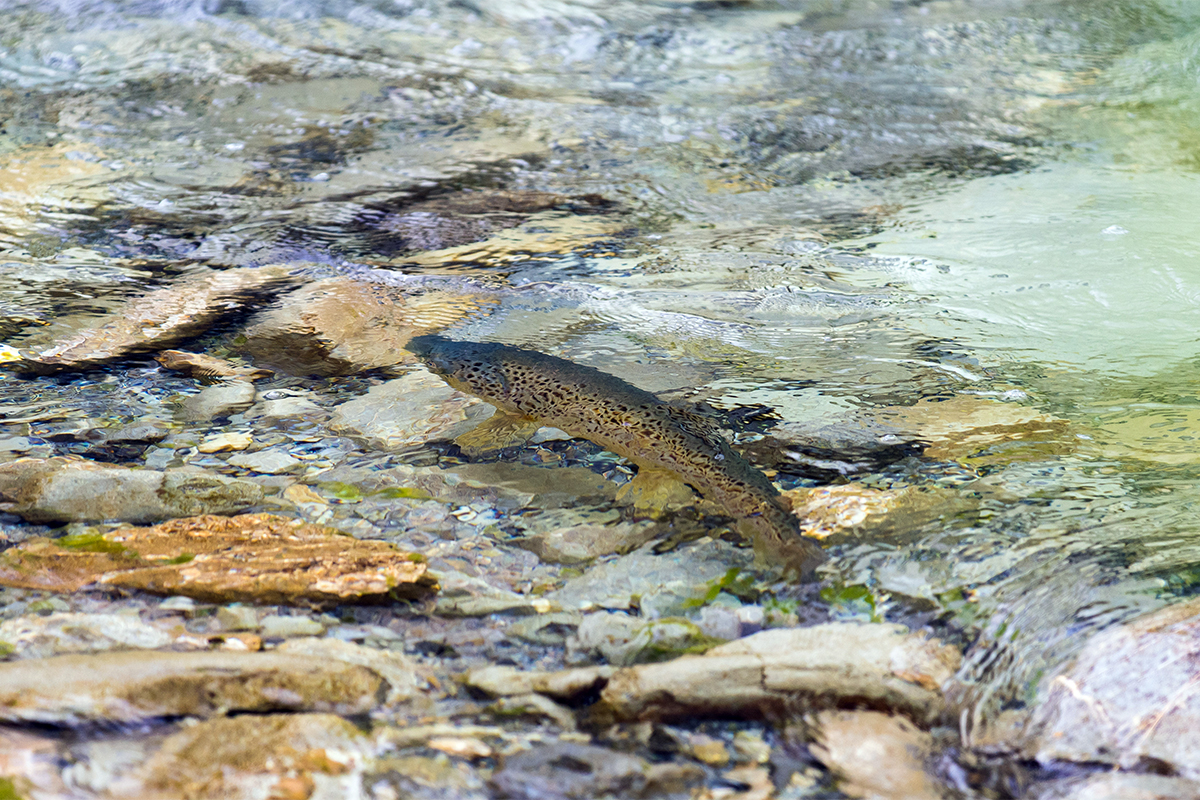Trout fishing is a popular activity worldwide, with millions of enthusiasts angling for the elusive fish in various water bodies. While some anglers swear by specific techniques and baits, others are always on the lookout for new ways to improve their catch rate. One question that has puzzled many trout fishermen is whether trout look up or down when feeding. This question has sparked numerous debates, and the answer is not as straightforward as one might think.
The behavior of trout when feeding is influenced by several factors, including the time of day, water temperature, and availability of food. Some studies suggest that trout primarily look up when feeding, while others indicate that they focus more on the bottom. In this article, we will explore the factors that affect the feeding behavior of trout and attempt to answer the question of whether trout look up or down when feeding. So, if you are an avid trout fisherman looking to improve your catch rate, this article is for you!
Trout have an exceptional ability to look up and down through the water. They have a natural ability to see in all directions and are capable of spotting prey above and below the water’s surface. This is due to their unique eye structure, which allows them to have a wide field of vision. In addition, their lateral line system allows them to detect vibrations in the water, which helps them locate prey.

H2: Do Trout Look Up or Down?
Trout is one of the most popular fish species among anglers, and they are often targeted for their challenging behavior and elusive nature. One of the most debated questions when it comes to trout fishing is whether they look up or down. In this article, we will explore this topic and provide you with some insightful information.
H3: Anatomy of Trout
Trout are cold-water fish that belong to the salmon family. They are streamlined and have a torpedo-shaped body that helps them move through the water with ease. The anatomy of trout also includes a lateral line that runs along the length of their body, which allows them to sense vibrations and movement in the water.
Trout have a unique feature of having eyes set high on their head, which provides them with a wide field of vision. This means that they can see in all directions, including up and down. Their eyes also have a special adaptation that allows them to see well in low light conditions, which is beneficial for their survival in the wild.
When it comes to feeding, trout typically look up towards the surface of the water for insects and other prey items. However, they also feed on aquatic insects, crustaceans, and small fish that can be found near the bottom of the water column. Therefore, trout are known to look both up and down, depending on their feeding habits and the availability of prey.
H3: Factors Affecting Trout’s Vision
Trout’s vision is affected by several factors, including water clarity, light conditions, and the depth of the water. In clear water conditions, trout can see objects and prey items from a distance, making it easier for them to spot potential food sources. However, in murky or cloudy water, their vision is impaired, and they rely more on their lateral line to sense movement and vibrations.
Light conditions also play a significant role in trout’s vision. During low light conditions, such as early morning or late evening, trout tend to feed near the surface, where they can see better. In contrast, during bright and sunny days, they may move deeper into the water column to avoid the glare of the sun and to find cooler water temperatures.
The depth of the water also affects trout’s vision. When fishing in shallow water, trout are more likely to look up towards the surface for prey. In deeper water, they may look down towards the bottom to find food sources. Therefore, the depth of the water is an essential factor to consider when targeting trout.
H3: Strategies for Trout Fishing
Understanding trout’s behavior and feeding habits is crucial for a successful fishing trip. Here are some strategies to consider when targeting trout:
1. Use the right equipment: Trout are known for their elusive nature, so using the right equipment is essential. Use a lightweight rod and reel with a light line to avoid spooking the fish.
2. Choose the right bait: Trout are opportunistic feeders and will eat a variety of prey items, including insects, crustaceans, and small fish. Use bait that mimics their natural food sources to increase your chances of success.
3. Consider the water depth: As mentioned earlier, the depth of the water is critical when targeting trout. Use a depth finder to locate the fish and adjust your bait accordingly.
4. Cast upstream: When fishing in a river or stream, casting upstream allows the bait to drift naturally towards the fish. This mimics the natural flow of the water and increases your chances of a bite.
5. Be patient: Trout fishing can be challenging, so it’s essential to be patient and persistent. Keep trying different techniques until you find what works best for you.
Vs
In conclusion, trout look both up and down, depending on their feeding habits and the availability of prey. Factors such as water clarity, light conditions, and the depth of the water also affect their vision. Understanding these factors can help anglers develop effective strategies for targeting trout. So, the next time you go trout fishing, remember to take these factors into consideration to increase your chances of success.
Frequently Asked Questions
Here are some commonly asked questions about whether trout look up or down.
Do trout always look up or down?
The simple answer is no, trout do not always look up or down. In fact, they have a field of vision that covers almost 360 degrees around them. This means they can see things that are above or below them, as well as to the sides. However, they do tend to spend most of their time looking forward and slightly upward, which is where their prey is most likely to come from.
So while they are capable of looking in all directions, they do have a preferred direction of focus that is determined by their hunting habits.
Can trout see things above the water’s surface?
Yes, trout can see things above the water’s surface. They have very good eyesight and are able to detect movement and changes in light and shadow. This means they can see insects flying overhead, birds soaring in the sky, and even anglers standing on the bank.
However, just because they can see these things doesn’t mean they will necessarily be spooked by them. Trout are used to seeing all sorts of things in their environment and will only become wary if they perceive a threat.
Do trout always look straight ahead?
No, trout do not always look straight ahead. They are able to move their eyes independently, which means they can look in different directions at the same time. This allows them to keep an eye on their surroundings and watch for potential threats or prey.
However, they do tend to have a preferred direction of focus, which is forward and slightly upward. This is because their prey is most likely to come from this direction, and they are adapted to hunt in this way.
Can trout see things underwater?
Yes, trout can see things underwater. They have very good eyesight and are able to detect movement and changes in light and shadow, even in murky water. This means they can see their prey swimming in the water column, as well as objects on the bottom of the stream or lake.
However, their vision is not perfect, and they may have trouble seeing things that are very small or very far away. It’s also worth noting that they rely on other senses, such as their sense of smell, to locate prey and navigate their environment.
Do trout look up or down when feeding?
Trout tend to look up when feeding, as their prey is most likely to come from above. They are adapted to hunt in this way, and their eyes are positioned on the top of their head to help them see things that are above them.
However, they are capable of looking in all directions and may also feed on things that are swimming below them or on the bottom of the stream or lake. Their feeding behavior will depend on the availability of food in their environment and their individual hunting preferences.

How To Find Trout In A River Part 1
As a professional writer, I can say that the question of whether trout look up or down is a fascinating one that has intrigued many anglers and fish enthusiasts for years. While some believe that trout look up to feed on insects and other prey that float on the water’s surface, others argue that they primarily look down to find food in the depths.
Despite the ongoing debate, one thing is certain: understanding the behavior of trout is essential for successful fishing. Whether you’re a seasoned angler or a curious beginner, taking the time to observe the behavior of these elusive fish can make all the difference in your fishing experience. So next time you’re out on the water, pay attention to whether the trout in your area are looking up or down, and adjust your fishing strategy accordingly. Who knows, you might just catch the big one you’ve been dreaming of!
